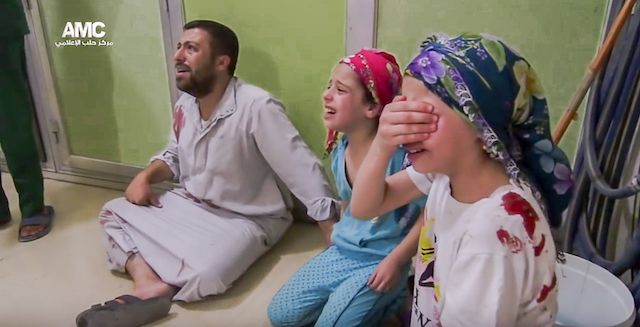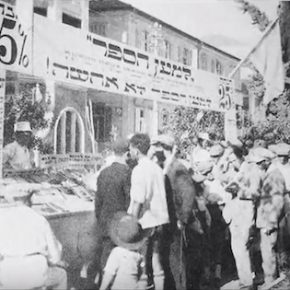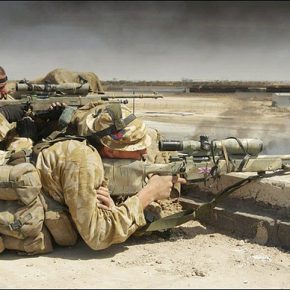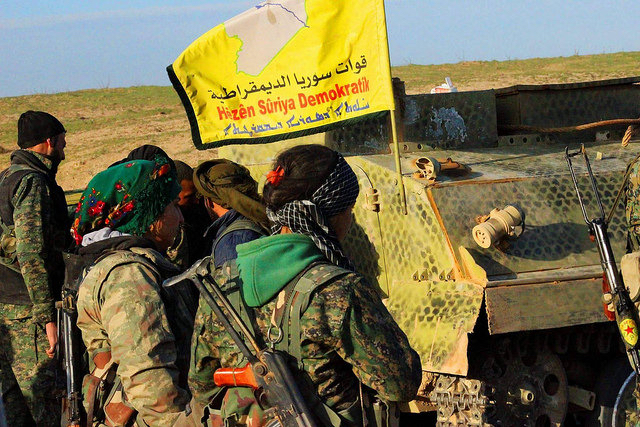Five years on and the Syrian army and rebel fighters continue to battle for Aleppo, Syria’s largest city. We asked three experts what needs to happen for the stalemate to end.
It took the haunting image of Omran Daqneesh, a young boy injured in an airstrike in the Syrian city of Aleppo last Wednesday, to bring the world’s attention back to a war of attrition that has raged unabated for weeks.
Five years into the war, the Syrian government and rebel fighters are locked in a battle for Syria’s largest city. Syrian and Russian jets pounded rebel-held neighborhoods in Aleppo for much of last week after rebels managed to break through a partial siege of the city days earlier. Hundreds of people have been killed in the most recent flare-up of violence. Many of the estimated 1.5 million civilians trapped on both sides of the city lack access to water, food, basic supplies and medical care.
As the fighting rages on, we asked three experts what would have to happen for the stalemate in the city to end.
Christopher Kozak, research analyst at the Institute for the Study of War:
Unfortunately, the stalemate in Aleppo City will likely remain in place for quite some time. Despite their assertions to the contrary, neither the regime nor the opposition can muster the excess manpower or overwhelming firepower required to expel one another from the dense urban terrain of the city. Under these conditions, military success will continue to be measured in terms of feet and inches rather than miles. The battle for Aleppo City will thus largely be decided by which side gains a decisive advantage on the outskirts of the city rather than its urban core. In a practical sense, the stalemate will only end when one of the two warring sides manages to force the surrender of their opponents by imposing a sustained siege on Aleppo City. This strategy has proven brutally effective in the past, as demonstrated by the surrender of opposition fighters in the Old City of Homs in 2014. In any scenario, the result is a humanitarian catastrophe of immense proportions.
More fundamentally, the stalemate in Aleppo City will end when the foreign backers of the warring parties determine that the status quo no longer serves their interest. The heavy investment of external actors in the fight for Aleppo City has played a large role in prolonging the conflict. Iran and Russia have compensated for the manpower shortages suffered by the regime with a steady stream of proxy fighters and air support concentrated around the city. Meanwhile, Turkey and Saudi Arabia have backfilled the opposition in Northern Syria with continued infusions of weapons, ammunition and cash. This external support precludes the catastrophic defeat of either side. This dynamic will only change once one or more of these powers decides to either abandon their involvement in the fight or, alternatively, invest sufficient resources to decisively overwhelm the others. The effects of such a shift would not be immediate – both the regime and the opposition remain committed to the fight regardless of the decisions of their external backers – but such a fundamental change in the balance of power would drive the stalemate towards its eventual resolution.
Lina Sergie Attar, co-founder of Karam Foundation:
It’s very difficult to think about Aleppo in terms of a stalemate because all I see is mass destruction, many people being bombed and another Syrian child’s photo gone viral.
We need a sustained effort from international powers to enforce a no-fly zone – a request Syrians living under barrel bombs, chlorine bombs, chemical bombs and missiles have been making for years. Red lines have been crossed so many times in Syria that they’ve become meaningless. Unless world leaders seriously pressure the Assad regime, their allies, ISIS and other extremists to stop terrorizing the Syrian people, there’s no real reason for them to end the war.
Instead, every few months, discussions about humanitarian corridors and safe zones come up at the United Nations, but they are divorced from the reality on the ground. How can you enforce a safe zone in Syria when no zone is safe from aerial bombardment? How many times will a photo of one of our Syrian children have to go viral? Last year, a refugee child drowning on a beach became the face of this war. Today, it’s a child who survived a Russian bombing. But a few days later the hashtag is forgotten and everyone moves on. The reality is that Syrian children like Omran are struck by bombs every day. He’s one of the lucky ones who survived.
“Red lines have been crossed so many times in Syria that they have become meaningless.”
– Lina Sergie Attar
Fouad M. Fouad, assistant research professor at the Faculty of Health Sciences, American University of Beirut:
I left my hometown, Aleppo, four years ago. Today, I follow the news through family members, friends and acquaintances back home. Most of them live in western neighborhoods – the regime part. The current situation in both sides of the city is very hard – death and airstrikes on the eastern side and it’s very expensive and daily goods are scarce in western part.
I don’t think Aleppo will remain a stalemate for long. It’s an important city to different players – local, regional and international. Those different actors, including Russia, Turkey, Iran and, to a lesser extent, the United States, aren’t clear on what they want to do in the city. Still, the actions by opposition fighters and Kurdish troops mean that the situation is constantly changing. Look at the fighting for Castello Road. Opposition fighters were defeated there after heavy fighting, but they were able to open another corridor a few days later. Just a few hours ago, I heard that Kurdish troops attacked Castello and had put up some sort of checkpoint in Castello, making entry and exit difficult for the region.
This article originally appeared on Syria Deeply, and you can find the original here. For important news about the war in Syria, you can sign up to the Syria Deeply email list. Screenshot courtesy of Aleppo Media Center. Published under a Creative Commons license.
![]()





